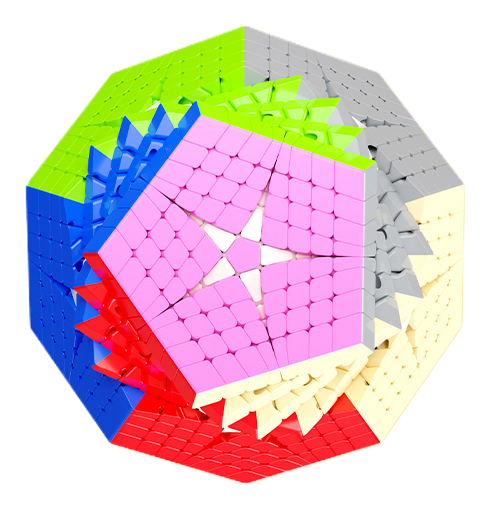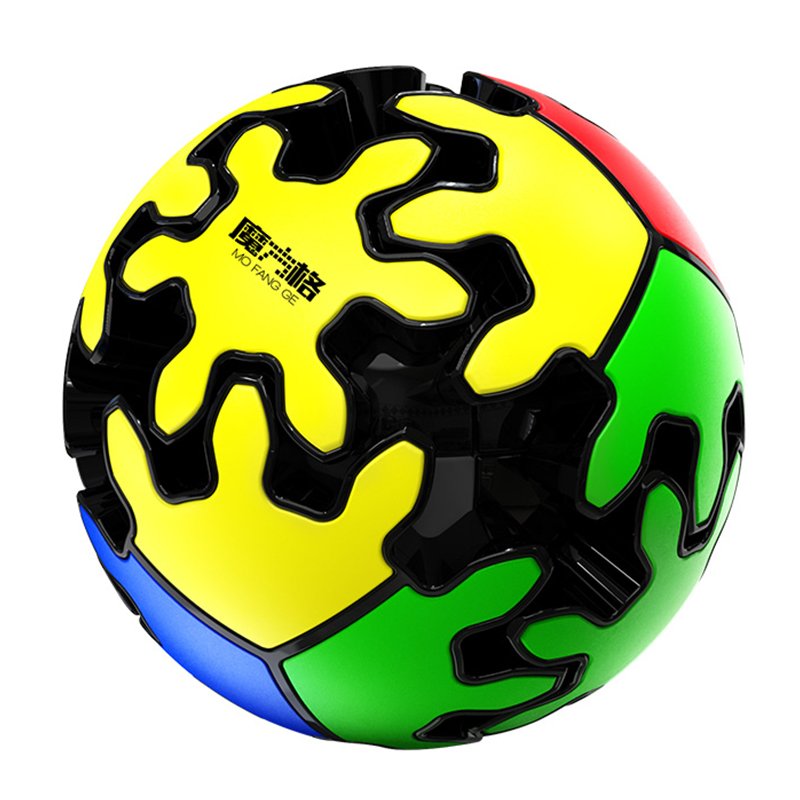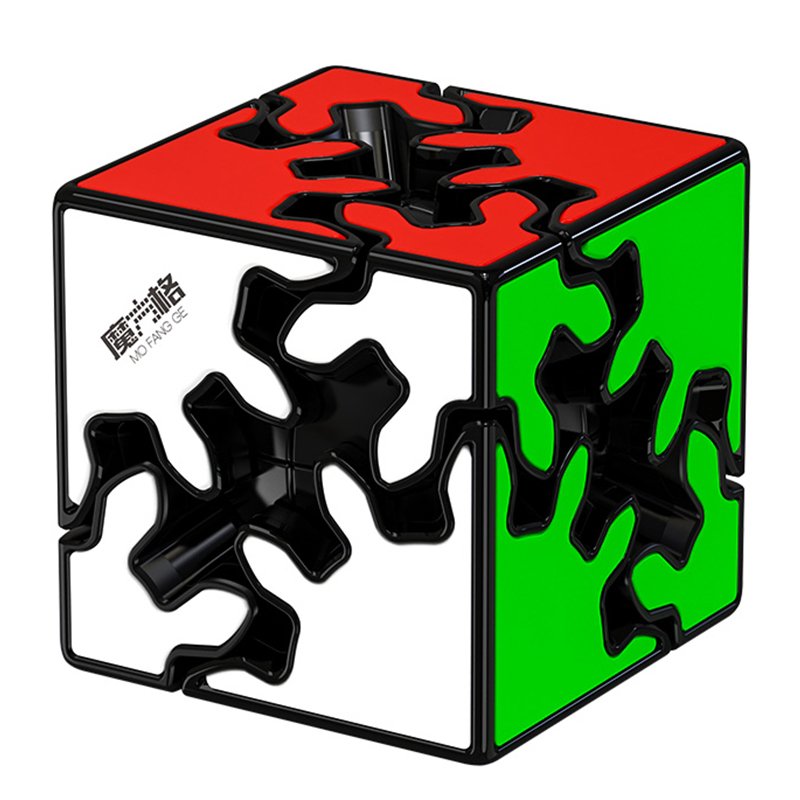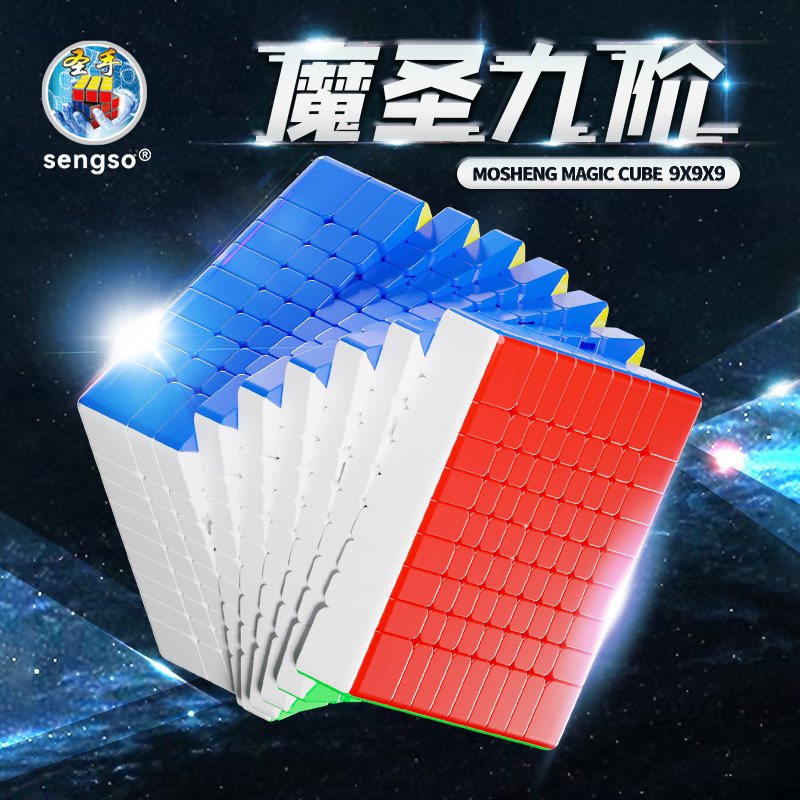Introduction to the Rubik’s Cube
Table of Contents
The Rubik’s Cube is a three-dimensional combination puzzle that has captivated the imagination of millions worldwide since its inception. Originally envisaged as a teaching tool for spatial relationships, the cube quickly gained popularity, transforming into one of the most iconic puzzles in history. The creation of the Rubik’s Cube is attributed to Erno Rubik, a Hungarian architect and professor, who invented it in 1974. It was initially known as the “Magic Cube” before it was rebranded as the Rubik’s Cube, which has become synonymous with puzzles and intellectual engagement.
The significance of the Rubik’s Cube extends beyond mere entertainment; it has fostered a global culture around problem-solving and creativity. In addition to being a beloved pastime, it has evolved into a competitive sport, with speed cubing emerging as a popular activity amongst enthusiasts. Competitors from around the world partake in races to solve the cube in the shortest amount of time, leading to the development of advanced techniques and the production of specialized speed cubes designed for optimal performance.
Throughout the years, the Rubik’s Cube has inspired a wide variety of derivatives and adaptations, from traditional models to high-tech smart Rubik’s cubes that offer interactive digital experiences. This evolution is testament to the cube’s timeless appeal and the innovative spirit of its community. The Rubik’s Cube has consistently remained relevant, adapting to modern trends and technology while maintaining its fundamental challenge of color alignment. As we delve deeper into the history of this esteemed puzzle, we will explore its cultural impact, its journey through time, and how it has managed to remain a staple in the realm of brain teasers and entertainment.
The Invention of the Rubik’s Cube
The Rubik’s Cube, a puzzle that has captivated the minds of millions, was invented in 1974 by Hungarian architect and professor Ernő Rubik. Initially known as the “Magic Cube,” its primary purpose was to serve as a teaching tool aimed at helping students understand three-dimensional geometry and spatial relationships. Rubik’s innovative concept allowed individuals to manipulate the cube’s segments, thereby fostering an understanding of complex architectural principles in a tangible way.
Rubik’s creation was grounded in the idea of enabling students to visualize and solve structural challenges, and it quickly garnered attention within educational contexts in Hungary. However, the journey of the Rubik’s Cube from a mere educational instrument to a globally recognized toy was fraught with challenges. After observing how much people enjoyed the cube, Rubik sought a manufacturer to mass-produce it, a task that proved to be more difficult than anticipated.
In 1975, Rubik partnered with a Hungarian toy company and began developing a production model. By 1980, the cube was officially introduced to international markets, transforming into a sensational puzzle. As it gained popularity, the Rubik’s Cube quickly evolved from a mere intellectual pursuit into a competitive activity, giving rise to a subculture of speed cubers who dedicated themselves to solving the puzzle in record times. This momentum not only revitalized the puzzle culture but also led to the creation of various types of cubes, including modern adaptations such as smart Rubik’s cubes and speed cube puzzles, which are designed for enhanced performance and problem-solving speed.
The legacy of the Rubik’s Cube is one of continuous evolution, beginning from its humble origins as a teaching tool to its status as a beloved global phenomenon, while simultaneously inspiring a diverse range of products available today at retailers such as the Mcubes Global Store.
The Rise in Popularity During the 1980s
During the 1980s, the Rubik’s Cube experienced an unprecedented surge in popularity, transforming from a simple puzzle to a global phenomenon. Initially created by Hungarian architect Ernő Rubik in 1974, the Rubik’s Cube captivated the imagination of people worldwide as it was introduced in various markets. The toy became a staple in households, schools, and playgrounds, growing into a cultural icon. The allure of the Rubik’s Cube can be attributed to its engaging challenge, as well as its appealing design, which invited users to explore their problem-solving abilities.
The turning point for the Rubik’s Cube occurred in 1980 when it made its debut at the Nuremberg Toy Fair in Germany. Subsequent coverage in international media propelled awareness and demand for the puzzle. By 1981, it had entered the American market, where it quickly attracted immense attention. Major television appearances and endorsements by celebrities further boosted the cube’s visibility, leading to impressive sales figures. In 1982, the first World Championship was held, marking the emergence of competitive speed cubing. This event signaled a new dimension in the Rubik’s Cube history, igniting interest in both casual and serious players.
The craze led to the creation of numerous books, tutorials, and guides dedicated to techniques and strategies for solving the cube. Clubs and communities formed, uniting enthusiasts and sparking discussions about optimal strategies. The rise of speed cubes—specialized Rubik’s Cubes designed for faster manipulation—further fueled this trend and encouraged advancements in the design of the cube itself. In turn, retailers such as mcubes global store began offering a variety of options for both novices and experts. The 1980s truly marked a pivotal era in the evolution of the Rubik’s Cube, establishing a foundation for the puzzles that continue to innovate and inspire today.
The 1990s and the Decline of Interest
The 1990s marked a significant turning point in the trajectory of the Rubik’s Cube, a puzzle that had once enjoyed immense popularity since its invention. The initial fervor surrounding the cube began to diminish as new toys and forms of entertainment emerged, capturing the attention of a generation eager for fresh experiences. The rise of video games and the burgeoning digital landscape provided a plethora of alternatives that diverted focus away from physical brainteasers like the Rubik’s Cube.
During this decade, various innovative toys, such as interactive dolls and action figures, started to dominate the toy industry, leading to a decrease in sales of traditional puzzles like the Rubik’s Cube. Moreover, television and the internet played a crucial role in altering leisure activities, offering children and adolescents an array of digital distractions that required less cognitive effort compared to solving a multilayered puzzle. The once-thriving community of Rubik’s Cube enthusiasts felt the impact of this shift, leading to a decline in participation in competitions and gatherings that had characterized the cube’s earlier years.
While some dedicated fans continued to hone their skills on speed cubes and maintained an appreciation for this enduring puzzle, many casual players abandoned the challenge altogether. The reduced presence of the Rubik’s Cube in popular culture during the 1990s also contributed to a fading awareness among the younger demographic, who were largely unaware of its rich history and the genius behind its invention. This period of decline, however, would not ultimately signal the end for the Rubik’s Cube. It paved the way for a resurgence, as the new millennium saw a revitalization of interest with the introduction of smart Rubik’s cubes and innovations designed to enhance the user experience. This revival would set the stage for a new era of Rubik’s Cube enthusiasts and advancements in puzzle technology.
A Revival in the 2000s: The Speedcubing Community
In the early 2000s, a remarkable resurgence occurred surrounding the Rubik’s Cube, primarily driven by the emerging speedcubing community. This period marked a shift in how enthusiasts interacted with the classic puzzle, blossoming into a vibrant subculture that celebrated speed-solving techniques and competitive play. Enthusiasts became increasingly invested in mastering the intricacies of the cube, leading to the development of a variety of methods aimed at optimizing solving times. The rise of the internet facilitated this movement, allowing like-minded individuals to connect through forums and social media platforms.
As the community grew, so did the accessibility of resources for both novice and experienced cubers. Online tutorials, videos, and detailed guides became commonplace, empowering newcomers to learn efficient techniques swiftly. Rubik’s Cube history was celebrated through competitions, often hosted in local and international arenas. These events brought speedcubers together, fostering not only a sense of competition but also community—a crucial element in sustaining long-term interest in the cube.
The modern era of the Rubik’s Cube also witnessed the introduction of advanced puzzle designs known as smart Rubik’s cubes. These innovative versions incorporate technology to provide real-time feedback and guidance, significantly enhancing the solving experience. This modern evolution contributed to a renewed sense of excitement and engagement with the puzzle. Additionally, the rise of speed cubes, which feature smoother turning mechanisms and customizable elements, played a vital role in attracting new enthusiasts and refining competition dynamics. Vendors, such as mcubes global store, began to meet the demand for specialized speed-cubing products, significantly contributing to the community’s growth.
Overall, the 2000s marked a pivotal moment for the Rubik’s Cube, characterized by a revival driven by the passion of the speedcubing community, facilitating a deeper appreciation of this iconic puzzle.
Technological Innovations: The Emergence of Smart Cubes
The Rubik’s Cube has undergone significant transformations since its inception in the 1970s. Initially, it was a simple mechanical puzzle designed to challenge one’s spatial awareness and problem-solving skills. However, with the advent of technology, a new variant known as smart Rubik’s cubes has emerged, revolutionizing how enthusiasts interact with this classic puzzle.
Smart Rubik’s cubes are equipped with advanced technology that enhances the cubic experience. One of the most notable features of these cubes is Bluetooth connectivity, allowing users to track their solving times and analyze their performance through connected apps. This integration of digital technology provides users with real-time feedback, making it easier for both beginners and experts to improve their skills. The interaction between the physical cube and the digital realm marks a significant milestone in Rubik’s Cube history.
Additionally, many smart cubes include built-in sensors that can detect individual piece movements accurately. This feature enables users to receive insights on their solving techniques and troubleshoot their approaches to each move. With the incorporation of tutorials and challenges on companion apps, users can learn advanced techniques and improve their speed in solving puzzles, further contributing to the popularity of speed cubes puzzle competitions.
Another exciting development in this area is the rise of customizable features in smart cubes, such as adjustable settings for tension and magnetic resistance, catering to individual users’ preferences. Retailers like mcubes global store now offer a range of these technologically advanced puzzles, providing enthusiasts with ample options to choose from. As technology continues to evolve, the future of Rubik’s Cube innovations promises even more features, engaging layers, and interactive experiences for all users.
The GAN Smart Cube: A Game Changer
The GAN Smart Cube represents a significant advancement in the world of speed cubes puzzles, setting a new standard for competitive cubers. Known for its innovative design and cutting-edge technology, the GAN Smart Cube integrates a variety of features that distinguish it from traditional Rubik’s cubes. One of its most remarkable attributes is the adjustable tension system that allows users to customize the feel and performance of the cube to their preferences, which is essential for achieving the fastest times in competitions.
Moreover, the GAN Smart Cube utilizes advanced materials that enhance both weight and durability, providing a smooth turning experience that facilitates quicker maneuvers. This factor is crucial for speed cubers, who often practice for hours to improve their skills and achieve record-breaking times. Notably, this cube also includes a built-in Bluetooth module, enabling real-time performance tracking and analysis through a dedicated app. This innovative feature appeals to both amateur enthusiasts and seasoned competitors, providing valuable insights into solving patterns and optimization methods.
The popularity of the GAN Smart Cube within the cubing community reflects its commitment to merging technology with traditional puzzle solving. Since its introduction, it has garnered a loyal following, supported by positive reviews from competitive cubers and casual users alike. This proliferation can be attributed to the rising trend of smart Rubik’s cubes that challenge the conventional paradigms of puzzle solving. As more individuals seek to enhance their cubing techniques, it is evident that devices like the GAN Smart Cube are reshaping the landscape of Rubik’s cube history.
In conclusion, the GAN Smart Cube is not merely another accessory in the world of puzzles; it represents a paradigm shift, providing users with innovative tools to refine their skills and engage with the Rubik’s cube in unprecedented ways.
The Impact of Online Retailers on Rubik’s Cube Culture
The advent of online retail has dramatically transformed the Rubik’s Cube culture, facilitating easy access to a wide range of puzzles and accessories. Online platforms, such as themcubes.com, have become essential in this transformation, catering to both casual players and dedicated enthusiasts. The convenience offered by these retailers, including speedy delivery and favorable shipping policies, has enabled fans of the Rubik’s Cube to purchase their desired items with minimal hassle. As a result, the global availability of different cube variants, including smart Rubik’s Cube and speed cubes puzzle, has significantly increased.
Traditionally, enthusiasts had to rely on local stores, which often had limited selections. The emergence of dedicated online marketplaces has not only expanded the inventory available to consumers, but it has also contributed to the burgeoning community of Rubik’s Cube aficionados. Online retailers facilitate connection through forums, reviews, and tutorials, nurturing an informed consumer base. Such engagement encourages the sharing of techniques and strategies, enriching the overall Rubik’s Cube experience. With various brands featured on these platforms, users can explore different types of puzzles that cater to their skill levels, including unique designs and advanced innovations.
Moreover, the competitive nature of online shopping has led to an increase in promotions and deals, making it more viable for enthusiasts to try new products. Favorable exchange terms also encourage risk-free investments in cubes, making it possible for consumers to experiment with new designs without fear of financial loss. This active participation in the marketplace fosters a culture where creativity and skill can flourish, ultimately enhancing the puzzle-solving experience. As the Rubik’s Cube continues to evolve, online retailers play a pivotal role in shaping both the market and the community surrounding this iconic puzzle.
Conclusion: The Future of the Rubik’s Cube
The Rubik’s Cube has undergone significant transformations since its inception, evolving from a simple three-dimensional puzzle into a multifaceted phenomenon that has captivated millions globally. Originally invented by the Hungarian architect Ernő Rubik in 1974, the Rubik’s Cube has transcended generations, becoming a symbol of both challenge and intelligence. Its history is marked by the invention of various forms, including specialized speed cubes that enable rapid solving, and the recent emergence of smart Rubik’s Cubes that integrate technology for enhanced experiences.
Today, innovations continue to shape the Rubik’s Cube landscape. The introduction of digital interfaces and app-assisted solving for smart Rubik’s Cubes demonstrates the potential for interactive play. These advanced iterations allow users to engage with the puzzle in ways that were previously unimaginable, combining traditional manipulation with technological advancement. Furthermore, online competitions and the rise of speed cubing have accelerated interest in the community, leading to the development of high-performance speed cubes optimized for competitive solving. The variety offered by platforms such as Mcubes Global Store showcases how hobbyists and enthusiasts can access these innovative puzzles with ease.
Looking to the future, the Rubik’s Cube is poised to continue its evolution. With advancements in AI and machine learning, we may see even more sophisticated designs emerge. The potential for augmented reality (AR) and virtual reality (VR) applications also suggests exciting new dimensions of interaction. This ongoing evolution will ensure that the Rubik’s Cube remains not only a steadfast challenge but also a platform for creativity and innovation. Ultimately, as it continues to adapt to modern technologies and cultural shifts, the legacy of the Rubik’s Cube as an enduring puzzle that bridges generational gaps will undoubtedly remain intact.





